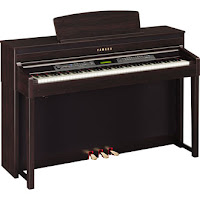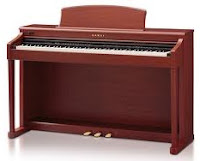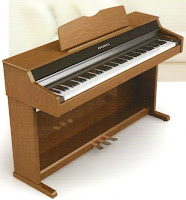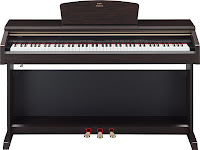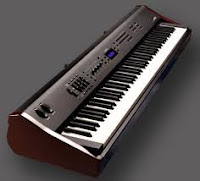UPDATED Report: August 2017 – All digital pianos in this report have long been discontinued and replaced by new models. Please go to the following link for info on these newer model digital pianos: Digital Piano Reviews under $1000. Shopping for a digital piano can be confusing for people! I know this because for many years I have helped literally thousands of people all over this country and the world make the right buying decisions for “their needs and budget” on digital pianos. There are a lot of things to consider before making your purchase that could be important in the short term & long term including the actual piano key touch action & tone response of the piano, the built-in audio-speaker system, educational features, cabinet construction, design, overall looks, reliability, ease of use, additional piano functions, instrument tones, controls, connectivity, longevity, and much more.
With all this in mind, spending your money wisely is very important as there are some functions and features on digital pianos that may not seem necessary to you in the beginning, but they can become more important later on as you progress and grow in your playing skills and ability to use the digital piano. It is always good to examine digital pianos closely to see what features they may lack and what extra features they may have that will help the music you are playing to be even more beautiful and exciting and give you more reasons to enjoy the investment you have made.
Although there are many digital pianos with a good amount of nice instrument sounds in addition to the piano tones, most digital pianos cannot combine more than 2 independent instrument sounds together at the same time and they also do not normally have independent volume controls for those two instruments when being layered or mixed together in any way. There may be a single relative volume control between two instruments in dual-layered tones, but that does not give you individual volume control, especially over the first instrument. In other words, there is very little control over volume when mixing instruments together, and combining more than 2 instruments is not possible in most digital pianos even on the more expensive piano models. This is an important feature which has been missing in most digital pianos whether they be furniture cabinet type of portable.
In addition to all of that, when you are able to combine a couple of instruments together, you also cannot control the individual aspects of each instrument such as how much echo or reverb each one gets, how much EQ (treble, mid range, bass) each one gets, how much panning (which speaker it comes out of) each one gets such as when an instrumentalist in an orchestra is sitting on the right or left side of the stage, the amount of attack, decay, and release of the instruments which allows you to customize and tailor the subtitles of each sound, and other aspects of those instruments. Even when there is a reverb-echo or brightness setting on a regular digital piano, it affects all instruments and sounds all together at the same time instead of allowing you to set them independently which is not a good way of controlling these things.
For some people who are satisfied playing only the piano sounds and maybe adding one additional instrument every now and then, the individual controls are not a real issue and may never become needed. But for someone like myself who enjoys orchestrating, arranging, and playing various instruments together while having quick and easy panel control functions to manipulate these instruments sounds, I have a tendency to get a bit bored when I cannot expand beyond the basics and express other musical things that are in my head. And when you are paying upwards of $2000, $3000, or more for a digital piano, it’s important to also consider what the digital piano cannot do, such as what I described here.
These extra sound and function controls that do the things I’ve mentioned here ARE normally available on certain digital pianos called “Controller Pianos.” These instruments are normally portable, have no speakers in them, and are not in furniture cabinets. However, many of them play and perform just like any of the top furniture cabinet models that you’ll find from Yamaha, Roland, Kawai, Casio, Kurzweil, and others.
As an example, the Kawai piano company produces a new low priced controller piano called the MP6 (left pic). This piano allows the user to individually control and combine up to 4 individual instruments at a time (there are 256 instruments in the piano including 20 pianos) with the ability of pre-setting these instruments and turning them on or off in any combination with the push of a button. This MP6 will do all of the things that I mentioned above as well as allow the user to split up the keys into 4 different and independent ‘zones’ so that each of the 4 instruments you select can be played live (with independent volumes) one at a time on different sections of the keyboard, with the ability to have each section transposed to a different octave for proper instrument range on those keys. You can also assign 2 independent instrument sounds to the right hand and two to the left hand for a total of four, and each of those instruments can have their transpose, octave, and effects individually changed and edited.
A great thing about the Kawai MP6 is when you have created a unique instrument combination and orchestrated the sounds to be a perfect mix for your song, you can save that as a memory setting to recall it later without having to set it all up again. There are 256 memory settings, so more than enough to save all your creativity. And to top off this kind of digital piano flexibility, the Kawai MP6 also offers 192 notes of polyphony to handle all 4 instruments at once, progressive half-pedaling, key let off for actual grand piano feel along with synthetic ivory keytops and progressive fully weighted hammer action. So once you have this piano connected to a good pair of stereo powered studio monitors for proper amplification and sound disbursement (150-300 watts of power with 4 built-in amplifiers) and have it sitting on a sturdy stand, you will have a piano package for under $2000 that will outperform nearly any furniture cabinet piano for two to three times the price. And when it comes to your music and what you’ll be able to do, there are virtually no limitations when it comes to the Kawai MP6 and playing beautiful music.
Before you spend a lot of money on a cabinet piano without the key action, tone, and functions that you wish you would have had in the beginning, take a look at some ‘controller pianos’ including Yamaha, Roland, Kurzweil, and the new Kawai MP6. I am very impressed with the Kawai MP6 after putting it through its paces and the only ‘downside’ is that fact it’s not in a traditional furniture cabinet with built-in speakers, so it’s certainly not for everyone. However, if that is not a big concern for you, then in my opinion you will have a musical instrument which doesn’t get much better unless you look at more expensive controllers such as the Kawai MP10 and a few others.
If you want more info on these and other pianos and lower prices than internet discounts, please email me at tim@azpianowholesale.com or call direct at 602-571-1864.




